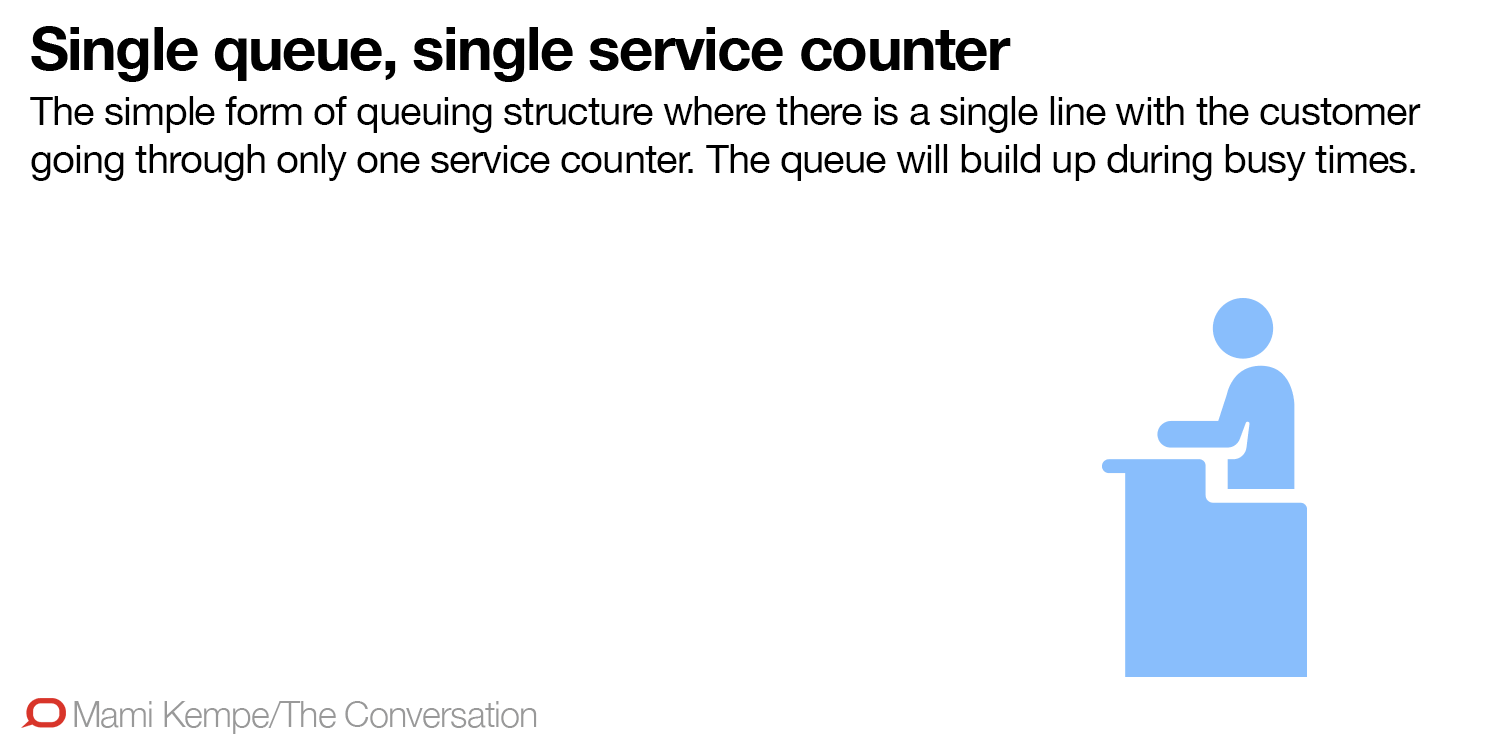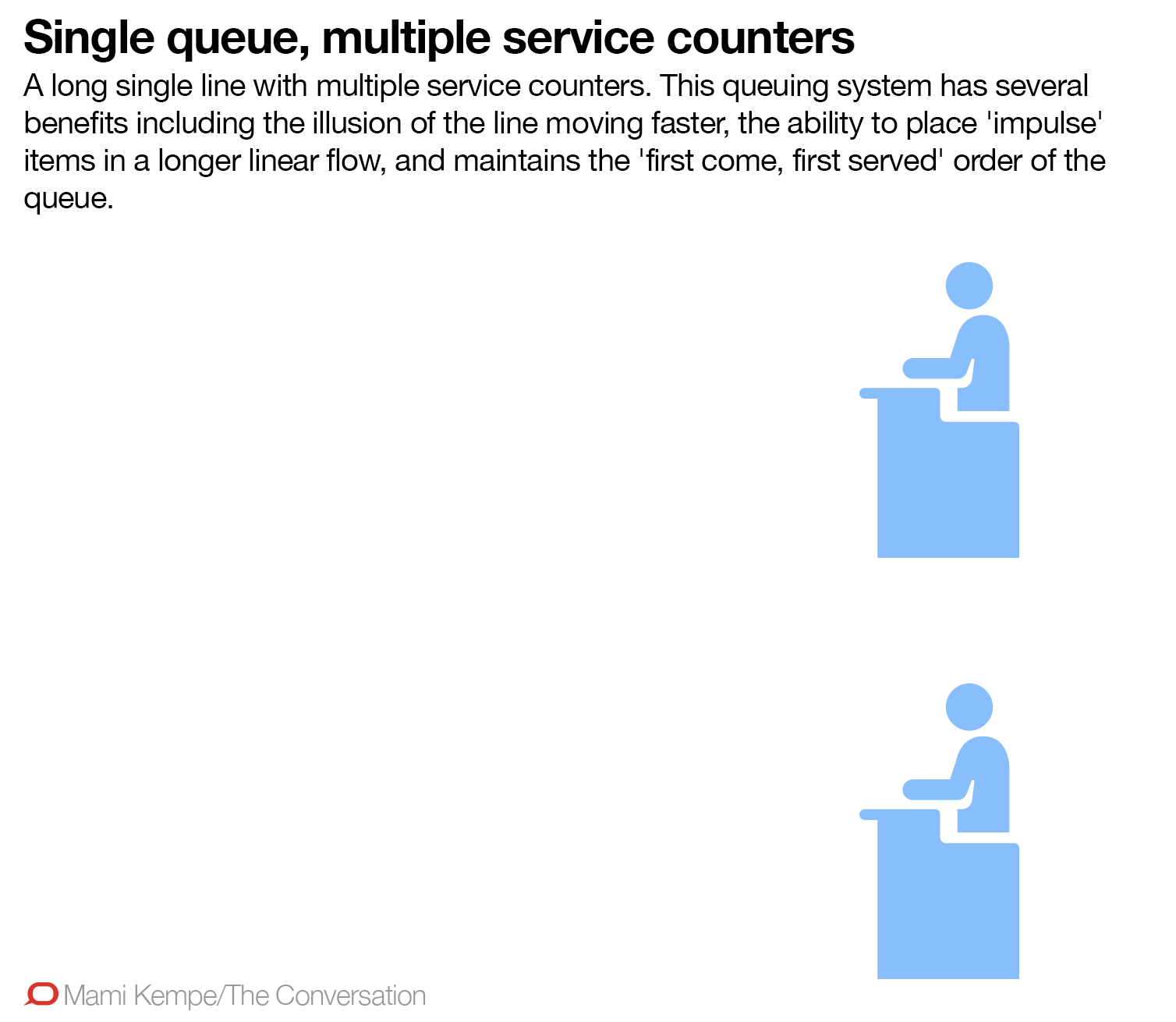My turn is the slowest: businesses are trying to get rid of queues
- Transfer
Enterprises estimate how much queues cost them, and use innovative ways to get rid of them, or at least make the feeling of waiting less unpleasant

The second article in the series “moving the masses” about managing the flow of crowds or individuals, drivers or pedestrians, customers or those traveling to work, birds or ants. ( previous article )
Remember that time is money.
Benjamin Franklin, 1748
You queue up to pay for your purchases, make a money transfer or wait for a table in a trendy restaurant, time is worth the money. Businesses are increasingly aware of the direct and indirect cost of waiting, and are looking for innovative ways to reduce these costs, inventing ways to get rid of queues. The problem faced by any business that caters to people who are forced to stand in line is that it needs to both manage human perceptions and optimize the speed of service.
People are not boats
In the context of logistics, for example, when loading and unloading ships, managers to some extent can predict delays or weather conditions affecting performance. They have historical data on the time of unloading the ship, the normal number of containers and the required working hands. Using this data, they can assign different windows in the chart to optimize the approach of the ships. Less queues are created, less time and money are lost.
Information about the windows in the graphics and the optimized approach paths are transmitted to the captains. They, in turn, come to the port just in time to be unloaded.
Unfortunately, unlike courts, people randomly queue up, which creates a problem in providing optimal service. Companies cannot control this type of customer demand.
For example, in supermarkets, people do not arrive at the cashier with an interval of exactly five minutes, having exactly six things in the basket. If this were the case, then the sellers could mathematically calculate how much cashiers need to use and at what time to maximize the level of service and minimize cost.
Find the perfect queue point
Enterprises are faced with the problem of finding the optimal point at which the cost of providing a service equals the cost of waiting. The behavior of people in queues creates direct and indirect costs for the enterprise. Sometimes clients artachatsya and refuse to stand in a queue. Or get up, and then change their mind, and leave because of too much waiting time.
This behavior leads to measurable cost . It can be direct, in the form of abandoned carts, or indirectly, in the form of a sense of low level of service, an increase in discontent and a decrease in client loyalty.

Vertically - the cost, horizontally - the level of service. With increasing quality of service, the cost of waiting decreases and the cost of service increases. The sum of these two graphs gives a “cup” of total value. Its minimum point is the optimal level of service.
Queue theory and queue evolution
The queuing theory (or queuing theory ) emerged from the work of the Danish engineer Agner Krarupp Erlang . In 1909 he experimented with fluctuations of requests for telephone traffic. By the end of World War II, Erlang’s early work was extended to more general business problems and tasks, such as airports . Queuing theory is now widely used to study the characteristics of arrivals, behavior on hold and the effectiveness of queues to predict latency .
Airports also tried to reduce baggage waiting times by moving baggage carousels away from the gate. Passengers spent time getting to the carousel, instead of waiting at her.
The nature of the queues is changing and will continue to change due to an increase in the population and a decrease in the amount of free time for consumers. In the retail industry, the classic seller, who manually hand-picked products for “first-come, first-served”, gave way to self-service supermarkets since the first such Piggly Wiggly store opened in Memphis, Tennessee, in 1916. These supermarkets praised their low prices and high quality of goods, and were the first to offer customers the cash registers, where people lined up, self-typing products.
The original system in the form of a “grid” allowed the sellers to serve several buyers at several cash desks, as well as to offer them a small amount of goods for an impulsive purchase, such as chocolates, soft drinks and magazines. This format, known as the single-channel single-phase system , still dominates the market.

One queue, one cash desk
However, more and more vendors are switching to the format of a longer single queue in which customers are served by several devices. Some install devices for self-checkout. This is called multi-channel single phase system.
Longer queues achieve three goals:
- They give the illusion that the queue is moving faster, because it is always moving forward.
- They allow sellers to provide more enticing options for impulsive buying along a longer linear flow.
- They reduce customer anxiety and irritation .

One queue, several cash desks
The last advantage arises because if there are several queues, the buyer does not know which of them moves faster. This creates an unpleasant sensation and a sense of inequality that the multichannel system is trying to reduce.

Several queues, several cash registers
Why does your turn always seem slower?
This feeling is explained by two interrelated theories. The imaginary correlation describes a wrong perception, in which a person feels that there is a connection between two characteristic quantities when in fact there is none. Imagine that you washed your car, and after that it started to rain - you can decide that washing was the cause of the rain. Or we can assume that the police often pay attention to the red cars - supposedly there is a link between driving a red car and the number of fines. In the queue area, two important quantities play a role, the “queue speed” and “your time”.
To this is added the theory of amplification. It is described in the study.from 2001, which suggested that “bad is stronger than good,” and that “bad memories have a greater psychological impact on us than good events.” In other words, we are more likely to remember slow queues than the time when we hit the fast queue.
In addition, it always seems to us that unoccupied time flows more slowly than busy. Therefore, enterprises are increasingly trying to take you something in the queue. You may be offered magazines or a TV screen.
The most obvious solution is to make you move all the time. This strategy is used at festivals and attractions, where zigzag lines with fencing are common. Such a queue helps save space, has a more orderly appearance, works objectively and prevents attempts to creep forward. People prefer to move, so standing still and waiting in line when they have nothing to do, leave an unpleasant impression and adversely affect the assessment of the service .
Get out of line
Many enterprises try to do without queues at all, or at least create a feeling of their absence. For example, in many banks, government offices, libraries, retail stores and airports, queues are starting to disappear.

Self-check-in kiosks at the airport get rid of long lines and improve our perception of convenience.
At airports , self-check-in kiosks replace queues and counters. Kiosks are scattered throughout the terminal, which allows passengers to experience the spatial convenience. In the retail service and services sector, our sense of convenience becomes worse the further we have to go, so the accumulation of basic services, including self-service kiosks and retail outlets, replaces the traditional linear airport scheme. Spatial convenience leaves people feeling a lack of crowds, queues, easy access and mobility .
Retailers play with innovative store floor schemes and completely eliminate queues. Banking queues are also a thing of the past: a new branch of the Queensland Bank invites customers to take a seat, rather than stand in a queue.
Are we still in line?
In general, yes and no. We still have to wait, but the way we do it, and especially the feeling of expectation, is definitely changing.
For example, the new Amazon Go store has removed absolutely all cash registers. This ensures that its customers do not have to queue up. The only problem is the long queue at the entrance to the store!
